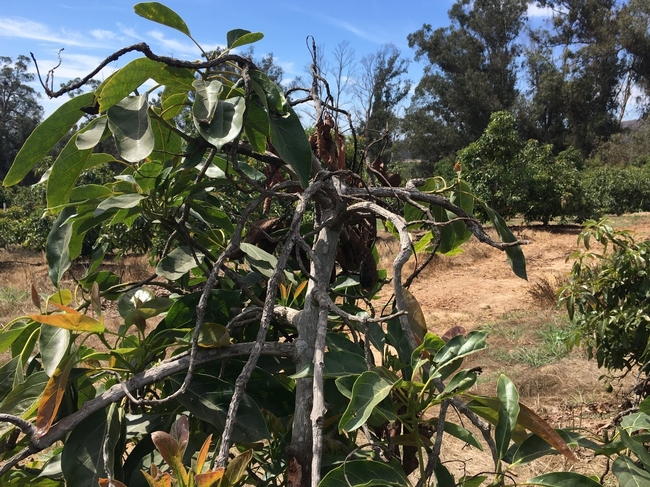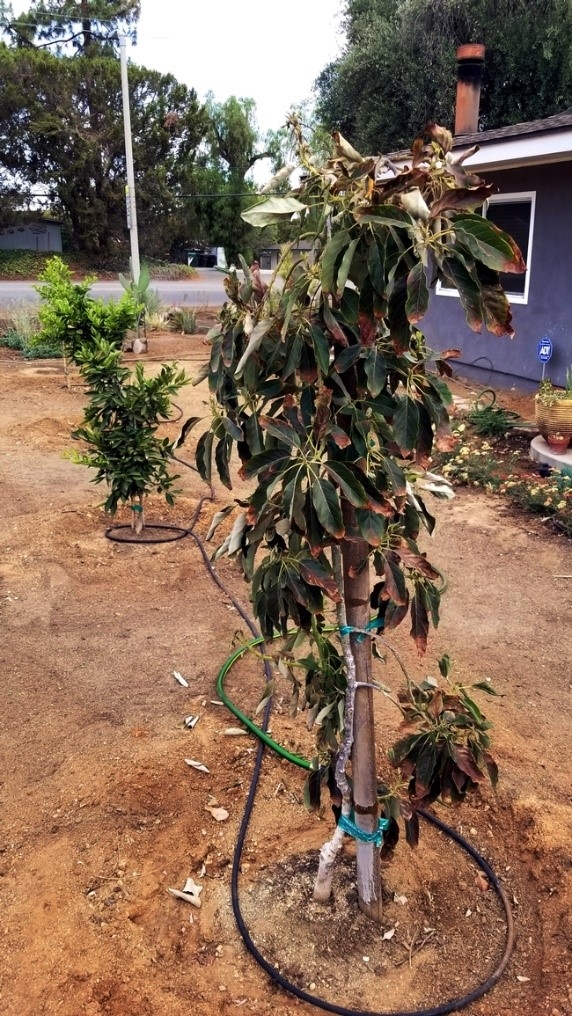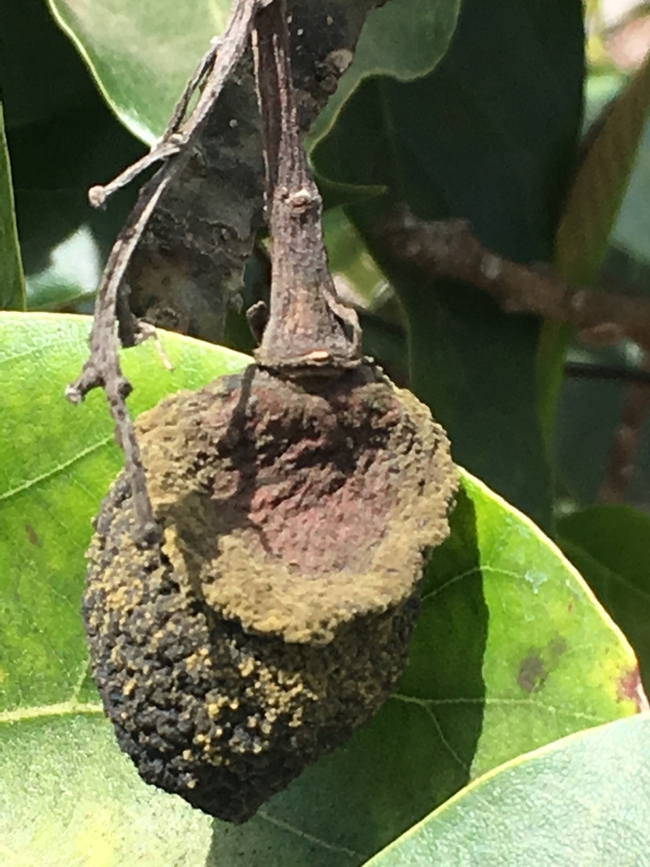Tree crops growers ranging from citrus to avocado to cherimoya and other exotic fruit tree crops were hit be the fires of December 2018. Many trees were damaged by fire, but many more trees were affected by the heat generated by the fire and to a certain extent the gasses produced by the fire. If the trees were not totally burned, many of the affected trees were growing back from the heat damage. In fact, some avocado trees with completely browned canopies had releafed and flowered in the spring of this year. Flowering was not the norm for damaged trees, but many were recovering.
The outlook for those recovering avocado trees was that they would probably flower in spring of 2019. It is necessary for the tree to grow out a vegetative flush in order for flower buds to form in the late summer. These buds then potentially flower the following spring. The tree most affected by the fires were those along the border of the towns from Goleta to Fillmore. The trees most affected were avocados, partly because they are the most numerous of the subtropical trees grown here, but because they are adjacent to much of the burn area.
On the weekend of July 6-8, extreme temperatures occurred throughout Southern California. These temperatures were in excess of 120 degrees F in some areas. Trees of all species were affected, even native trees, such as coast live oak and sycamore and exotics like eucalyptus and Brazilian pepper. Up to the weekend, temperatures had been very mild. With the onset of the heat, tree stomates were forced to transpire at higher rates than which they could adjust to. Stomata act, to cool a tree, and when water flow through the tree is insufficient, the canopy heats up and turns brown, killing the green tissue. In young trees, the whole canopy may be killed to the ground. In older trees, it is just the green foliage and buds. The same vegetative and floral buds that are damaged in a hot fire, such as occurred in December. The new flush that was happening after the fire was most affected by this second round of heat. Although many different tree species were affected, avocados with their shallow root systems had the least resistance to this rapid transpirational demand.
As leaves wilted from the heat, fruit and branches that had been shaded were exposed to the sun. This resulted in sunburn damage to small and, in some cases, large branches. These damaged branches may sprout in time, but unless they were whitewashed, they may never fully recover.
Fruit suffered both direct and indirect damage from this heat wave. Mature fruit exposed to the heat became very hot and was damaged and unsaleable. Much of that fruit has dropped off the tree. Current season fruit on the trees during this recent heat wave softened and became unmarketable. There also is some evidence that a heat wave like this can cause changes in the composition of the various oils in the avocado, resulting in decreased fruit quality. Many growers had harvestable fruit on their trees at the time of the heat wave, and have lost that crop. Fruit set for the coming season, in many cases, shriveled and has dropped off, as well.
The most devastating aspect of this heat wave was the timing. Most trees were beginning to produce this year's summer flush when the heat hit. This year's summer flush is where the spring 2019 bloom will set to produce the 2020 crop. Thus, the effects of this heat wave will be felt for several years.
For growers, they have suffered fruit losses and now they are faced with cleaning up the trees. They needed to have whitewashed the tree to prevent sunburn. They also need to remove dead leaves and branches, which become a source of inoculum for fungal diseases that can infect good tissue and any fruit that might be in the trees now and in the future.
If trees were thoroughly watered in anticipation of the heat wave, there was less damage, although still extensive. Trees that had been fully hydrated prior to the heat wave were less affected, but did not escape damage. Younger trees under three years of age may have been killed. Older trees will survive, but have lost fruit for at least the crop of 2018 and probably next year's crop. There may not be avocado crop in the affected areas until 2020.
This heat event is unprecedented. There have been hot periods in the past, although none this hot. What made this event so devastating was that the trees did not have time to adjust from a mild period of low evaporative demand to one of high in such a short 24-hour period. Even though this was an extreme event, trees given time to adjust and growers given enough advance warning probably could have sustained less damage with this amount of heat. The rapid occurrence of heat like this would probably be just as devastating in the future.
Photos: heat damaged limbs, trees and fruit


